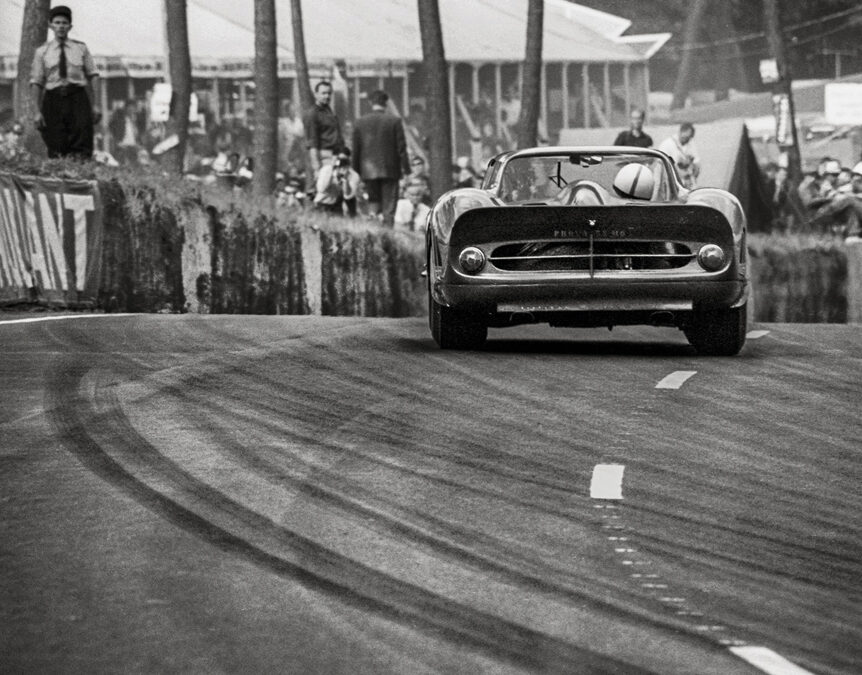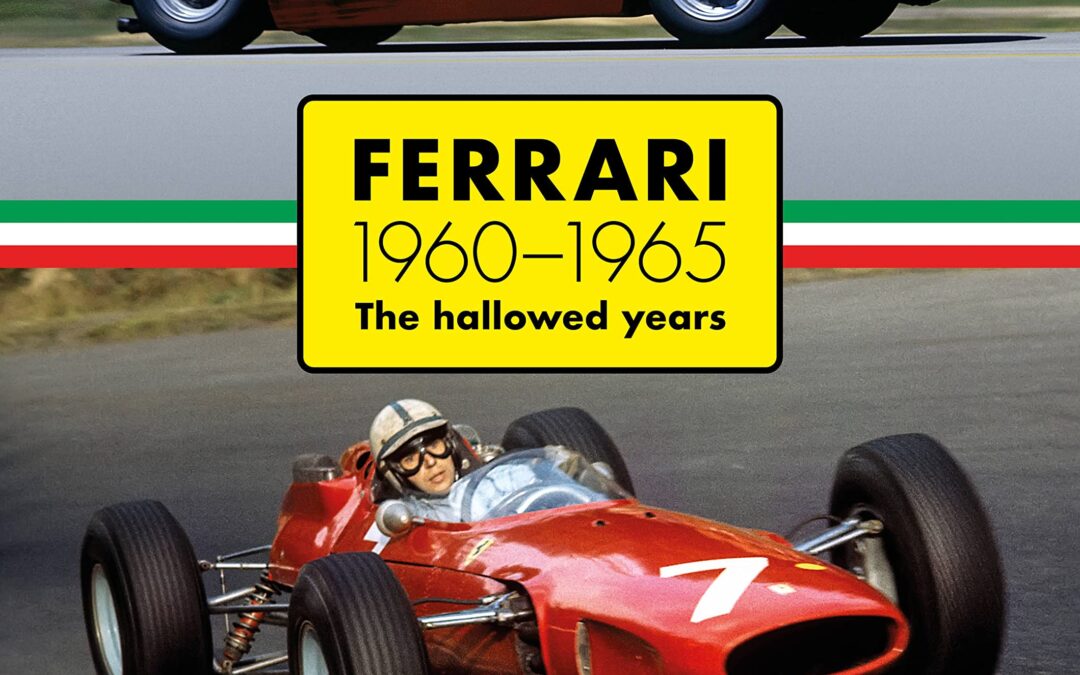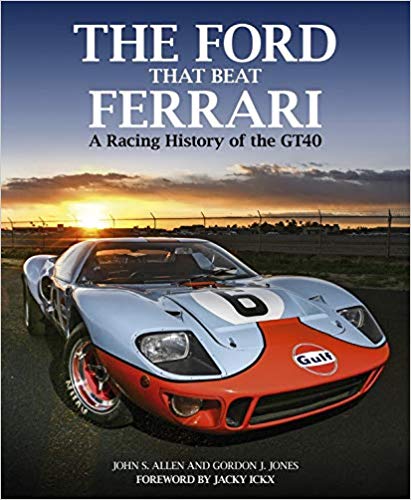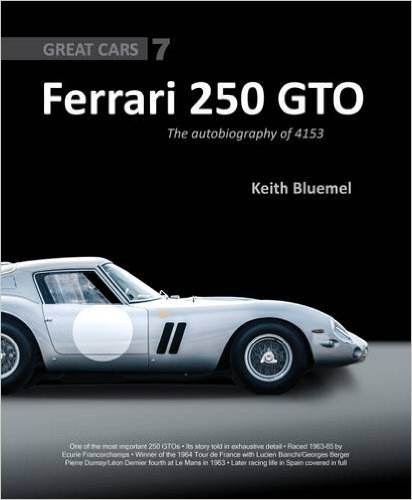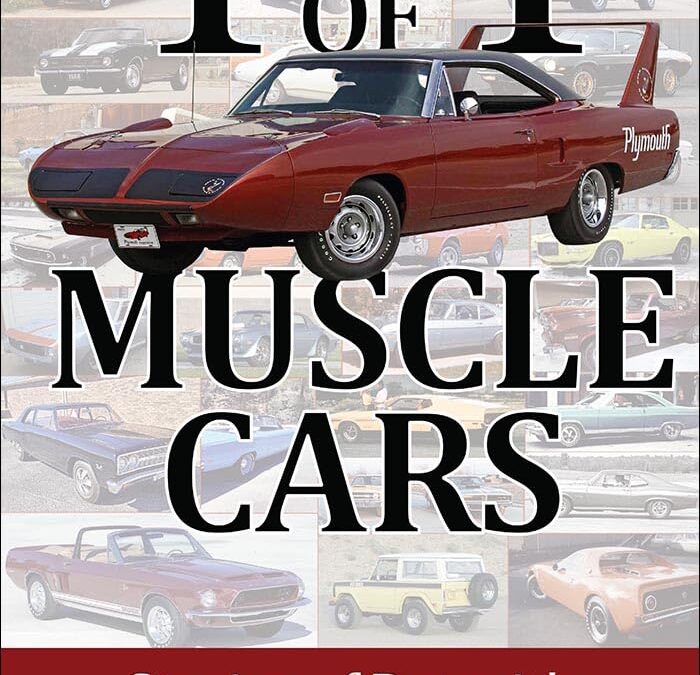
Learn about the rarest muscle cars ever produced with this new book.
In the world of muscle cars, many were produced and sold in large enough quantities that they would be considered special but not particularly rare at the time of production. The Boss 429 and Plymouth Superbird were produced for racing homologation reasons, and since they were very expensive to produce, the manufacturers ensured that they would be rare. However, there is rare, and then there is rare.
Prototypes and special factory builds, factory production cars, and super car tuners and builders are all covered in this new book by muscle-car historian Wes Eisenschenk. Some are single examples, some are very close to being the last remaining example, and all are extremely rare. Some have no surviving example known to exist. Featured cars include a Boss 429 Cougar, a 1971 Pontiac Ventura II Sprint 455, a 1965 Chevelle 300 COPO car with the L78 option, and a 1970 FK5 Deep Burnt Orange Metallic Superbird. Dealer promotional specials include a 1968 AMC AMX Von Piranha, a 1970 Dick Harrell LS6 454 Camaro, and a 1973 Nickey Chevrolet 427 Nova.
These are cars that you will read about but likely never see. For a fun ride through muscle-car history and great stories of the rarest muscle cars ever produced, add this book to your automotive library today.
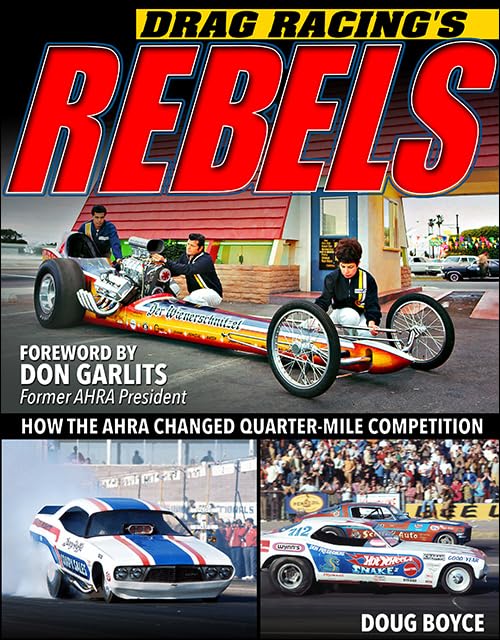
Learn the entire fascinating story of the American Hot Rod Association (AHRA) in this wonderfully illustrated color history.
When the National Hot Rod Association (NHRA) was formed in 1951 by Wally Parks, the reasoning for the formation was to “create order from chaos” by instituting safety rules and performance standards that helped legitimize the sport of drag racing. Some organization was certainly necessary. A postwar boom in automotive enthusiasm was reaching new heights, and Hot Rod magazine and the NHRA were right in the thick of it.
The NHRA hosted its first drag racing event in 1953, and in 1955, the organization staged its first national event, which was simply called “The Nationals.” The AHRA formed in 1956 as an alternative to the NHRA, where the drivers voted on the rules (rather than sanctioning bodies and tracks), and their influence on the sport was felt almost immediately.
When the NHRA denied the use of nitromethane in 1957, the AHRA approved it. When the NHRA banned aircraft-powered dragsters in 1961, the AHRA welcomed them. When the NHRA said no to the emerging Funny Car in 1965, the AHRA said yes. When fans and racers screamed for a heads-up Super Stock category in 1968, the AHRA delivered. The AHRA was called a rebel association. Some say that it was more of an association that got things done–to the delight of fans and racers. The AHRA was on equal ground with the NHRA by the 1970s, drawing enormous crowds and racer entries.
In this fascinating history, veteran author Doug Boyce tells the story of the AHRA: the rise, the competition, the events, and the eventual downfall of the organization. After AHRA President Jim Tice passed away in 1982, internal fighting for control of the association resulted in its doom. Get the whole story here, and add this wonderful volume to your drag racing library.
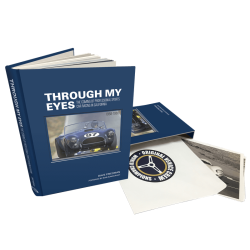
For over 65 years, Dave Friedman has been a world-renowned motion picture and still photographer known for his pictures of celebrities, cinema, classical ballet and car racing.
“Through My Eyes” is his latest book and it’s all about car racing in the years 1958-1965.
- This book has 364 Pages of car racing photos; most have never been seen before
- In this book are 658 of Dave’s photos of race cars, drivers, teams and events from 1958-1965
- All the famous race car drivers are in this book
- Along with photos and captions of these famous drivers and their cars are images of pit crews, fans, racetrack scenery, and humorous/historic incidents that occurred at these events.
- Limit edition of 200 books
- Each copy is signed by Dave Friedman and numbered 1-200
- This edition includes a custom designed slipcase
- Contains an OVC designed envelope with 6 pictures of racing legends
- OVC logo white gloves

SIGNED
For over 65 years, Dave Friedman has been a world-renowned motion picture and still photographer known for his pictures of celebrities, cinema, classical ballet and car racing.
“Through My Eyes” is his latest book and it’s all about car racing in the years 1958-1965.
- This book has 364 Pages of car racing photos; most have never been seen before
- In this book are 658 of Dave’s photos of race cars, drivers, teams and events from 1958-1965
- All the famous race car drivers are in this book
- Along with photos and captions of these famous drivers and their cars are images of pit crews, fans, racetrack scenery, and humorous/historic incidents that occurred at these events.
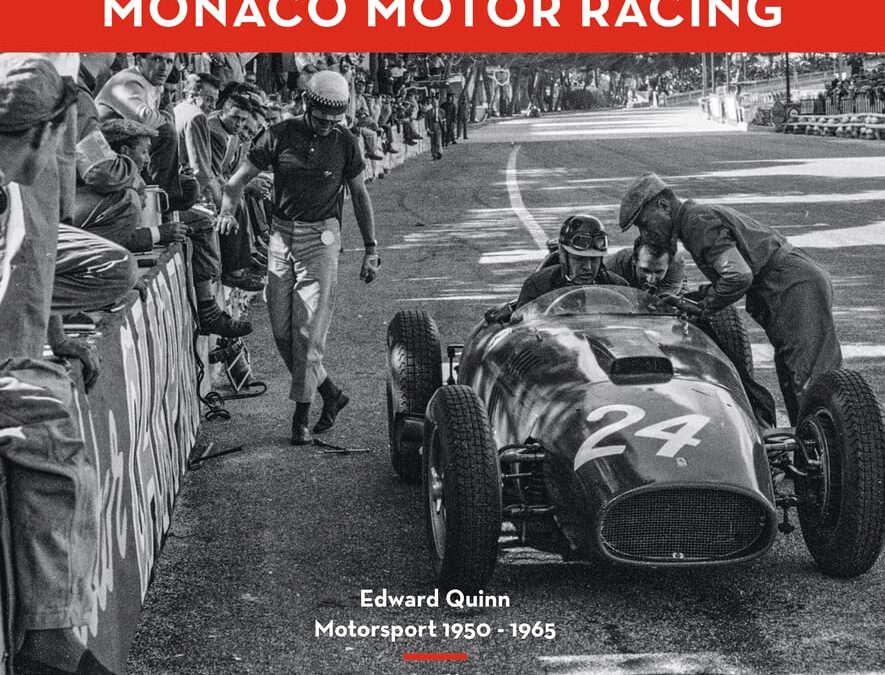
- Formula 1 of the 1950s and ’60s: images from a legendary era of motorsport
- Driver portraits, racing action and historic Formula 1 cars from Ferrari, Porsche, Alfa Romeo and Jaguar
- Over 270 photographs from Edward Quinn’s archive, some of which have never been published before
- Insights into post-war Monaco: lifestyle, glamor and celebrities
The Monaco Grand Prix is considered one of the most demanding races in Formula 1. Constant gear changes and the slowest corner in the world championship have always demanded everything from the racing drivers. Edward Quinn captured the most famous car race in the world from 1950 to 1965 in numerous photos. In his recordings, the well-known Formula 1 track is presented with almost no crash barriers and run-off zones, without advertising posters and sponsor logos. Many of his pictures are now combined for the first time in a large-format illustrated book. Accompanied by short descriptions and background information, they give a fascinating insight into the motorsport history of that time. Text in English and German.
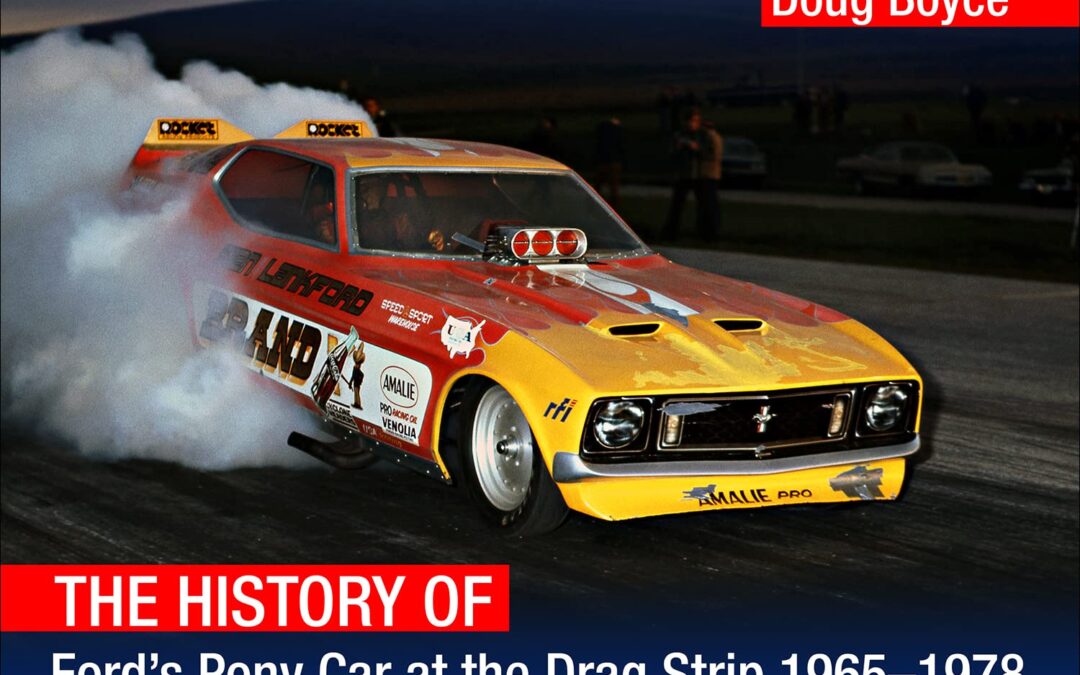
Blast down the quarter mile in the first two generations of Ford’s legendary pony car across all drag racing classes in Quarter-Mile Mustangs!
Since first becoming a mass-market success in mid-1964, the Ford Mustang has made millions of passes down the quarter mile on sanctioned drag strips. With styling flared toward the youth, aftermarket parts manufacturers saw an enormous opportunity to produce go-fast components to aid in propelling Ford’s pony car down the 1320. The success of these cars was immediate.
In the hands of successful and seasoned pros, such as Gas Ronda, Bill Lawton, and Dick Brannan, Ford unleashed the devastatingly potent 1965 A/FX Mustang fastback, which was built by Blue Oval stalwarts Holman & Moody with the 427 SOHC (Cammer) engine that unleashed havoc on mother Mopar.
From those very first factory drag cars through the fabled 1968-1/2 Cobra Jets, drag racing historian Doug Boyce highlights the many successes of pioneers, such as “Dyno” Don Nicholson, Les Ritchey, Phil Bonner, Hubert Platt, and Al Joniec. However, it’s not just all doorslammers. As A/FX transitioned into Funny Car, a whole new chapter in Mustang drag racing was written with Mickey Thompson taking the reins and steering Mustangs to success throughout the late 1960s and early 1970s.
The muscle car-era Mustangs joined the Mustang II and soldiered on the best they could as ever-changing rules hampered Ford’s new pony body, with drivers Bob Glidden and Nicholson trying to squeeze every bit of performance out of the diminutive pony.
Quarter-Mile Mustangs: The History of Ford’s Pony Car at the Drag Strip 1964-1/2-1978 brings forth the most in-depth coverage of these cars at the drag strip. Don’t get caught sleeping at the light!
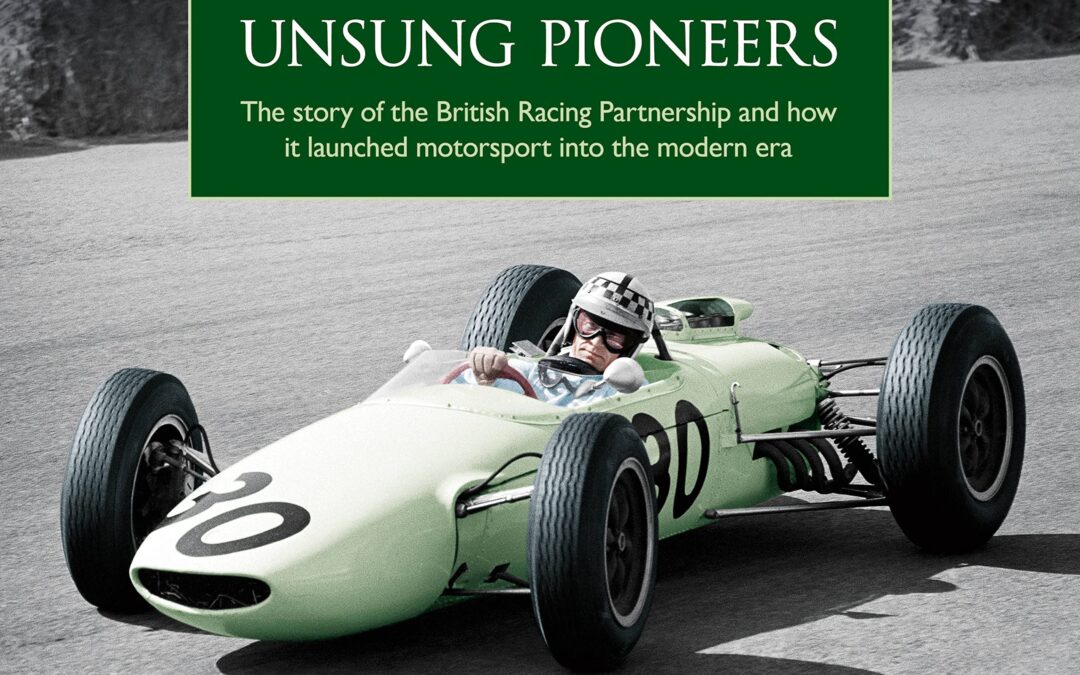
This is the previously untold story of a very special British racing team. The British Racing Partnership (BRP), which operated from 1958 to 1964, is best known for its association with Stirling Moss, who was driving a BRP-entered car at Goodwood on that fateful day in 1962 when a serious crash ended his career.
Less familiarly, BRP became the first fully sponsored team in Formula 1, partnering with Yeoman Credit, a go-ahead finance house, in an initiative that led to a transformation of the sport. Formula 1’s Unsung Pioneers tells the entire history of BRP in unprecedented detail, thanks to the author’s prodigious research and numerous interviews over the years with many leading participants, including Moss himself, team boss Ken Gregory, top driver Tony Brooks, chief mechanic Tony Robinson and many others.
- Formation of the team in 1958 by Stirling Moss’s father, Alfred, and his manager, Ken Gregory, running rear-engined Coopers in F1 and F2.
- Arrival of sponsorship by Yeoman Credit in the autumn of 1959, a year that saw Stirling Moss finish second in the team’s BRM at the British Grand Prix.
- The tragic 1960 season brought the deaths of three BRP drivers — Harry Schell, Chris Bristow and Ivor Bueb — in the space of three months, but racing activities widened to include Lotus sports cars.
- A different finance house, United Dominions Trust, became the sponsor for 1961, when Moss won many non-championship Formula 1 and sports car races for the newly named UDT-Laystall team.
- The 1962 season began badly with Moss’s Goodwood crash but peaked at that same circuit with Innes Ireland’s Tourist Trophy victory driving a BRP-run Ferrari 250 GTO.
- In response to the ground-breaking Lotus 25 with its monocoque chassis, BRP in 1963 built its own car for the first time, a BRM-powered F1 design also with a monocoque.
- The last F1 season, 1964, brought one final non-championship F1 victory for the team, achieved by Innes Ireland at Snetterton.
- BRP cars at Indy: an epilogue to the team’s story saw two cars built for the 1965 Indianapolis 500.
Lavishly produced and illustrated with 350 period photographs, this book will be treasured by all motorsport enthusiasts.
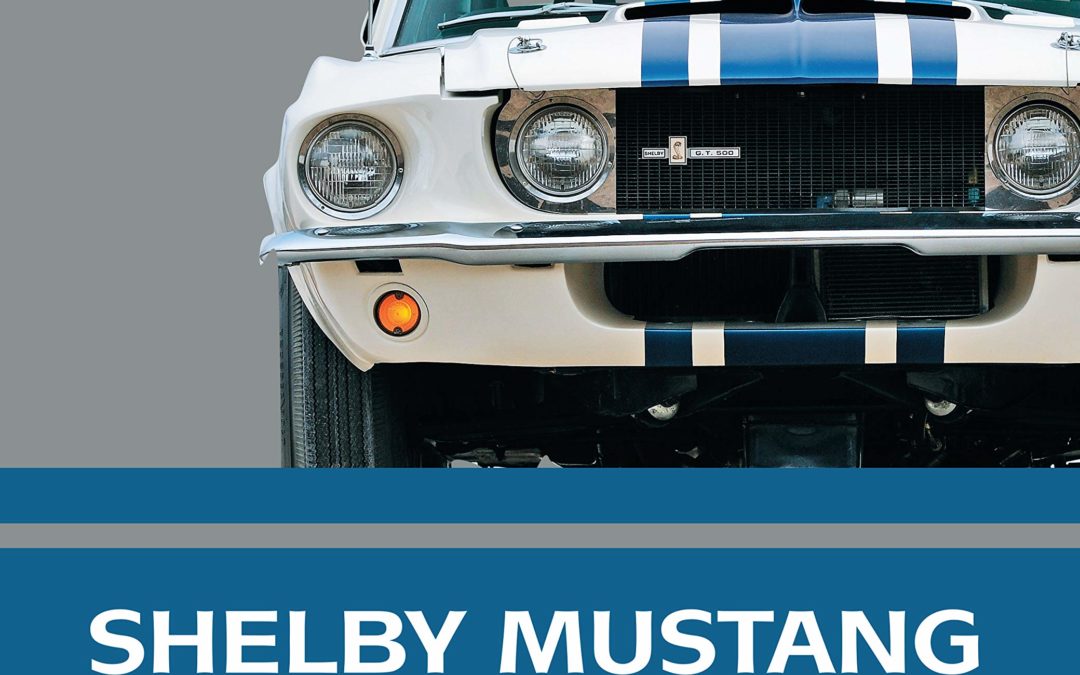
Shelby Mustang details the entire story of these fantastic cars, from the early prototypes built in Shelby’s Los Angeles shop to today’s Ford-engineered high-tech performers.
Written by one of the world’s foremost authorities on Shelby automobiles, critically acclaimed author Colin Comer, and with a foreword by Lee Iacocca, the American automobile executive credited with the successful development of the Mustang, this is the definitive account of the Shelby.
When Ford wanted to toughen up its super-successful new Mustang, they approached Carroll Shelby to give it the performance image it so sorely lacked. Beginning with a 1965 “K-Code” 289-cubic-inch-powered Mustang fastback, Shelby applied the same formula that had made his Cobra sports cars such devastating performers both on and off the track: more horsepower, less weight, balanced handling.
The GT350 quickly established itself as a bonafide force in SCCA B-Production racing, twisting back roads, and boulevards alike—setting the course for future Shelby Mustangs, like the big-block GT500. Though those original Shelby Mustangs were done by 1970, Ford dusted off its Shelby relationship in 2006 and has been producing high-performance Ford Mustang Shelbys ever since.
This is a must-have read for any fan of American performance cars, whether you’re a muscle-era original or a 21st-century stormer.
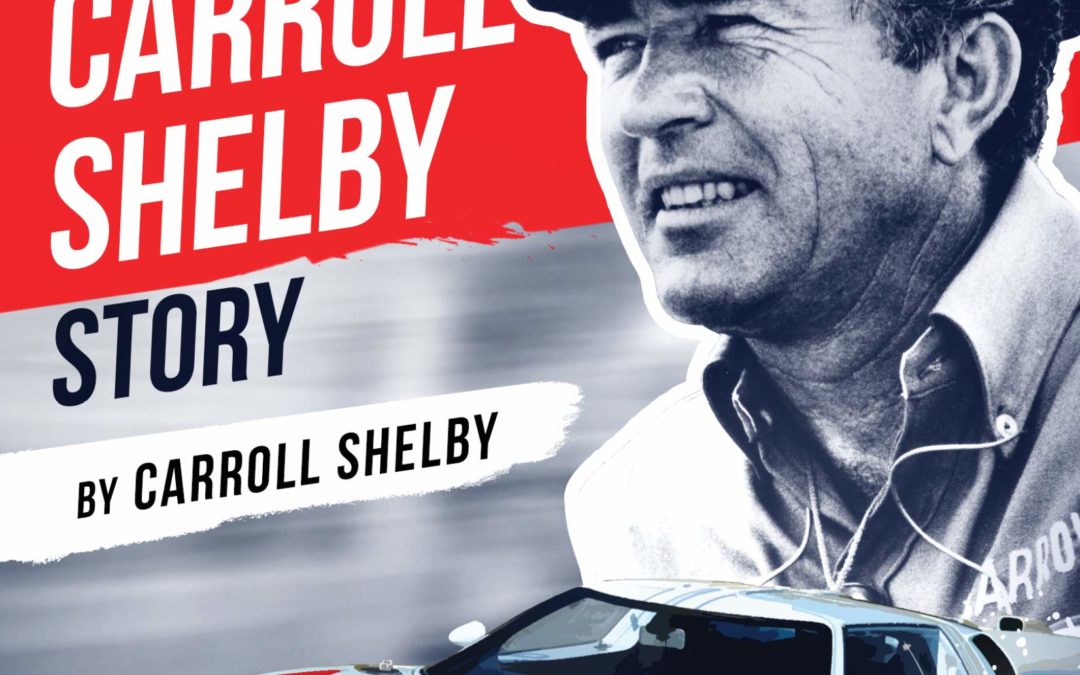
Carroll Shelby wasn’t born to run. He was born to race some of the fastest cars ever to tear up a speedway.
Carroll Shelby wasn’t born to run. He was born to race some of the fastest cars ever to tear up a speedway. The exciting new feature film Ford v Ferrari–starring Matt Damon as Shelby and Christian Bale as fellow racer Ken Miles–immortalizes the small-town Texas boy who won the notorious Le Mans 24-hour endurance challenge, and changed the face of auto racing with the legendary Shelby Cobra. But there’s much more to his high-velocity, history-making story.
A wizard behind the wheel, he was also a visionary designer of speed machines that ruled the racetrack and the road. While his GT40s racked up victories in the world’s most prestigious professional racing showdowns, his masterpiece, the Ford Cobra, gave Europe’s formidable Ferrari an American–style run for its money. If you’ve got a need for speed, strap in next to the man who put his foot down on the pedal, kept his eyes on the prize, and never looked back.
Originally published in 1965 as The Cobra Story by Carroll Shelby

Bentley Since 1965 tells the story of the revival of the Bentley marque and the technical developments that shaped the company’s latter-day history. To illustrate the fall and rise of Bentley, this book goes right back to the origins of the 1960s T series cars through to the current Continental. The modern Bentley has become a huge success story without losing any of its exclusivity. Covers all significant Bentley models from 1965 onwards.Details significant engine and chassis developments.Includes technical details and specification sheets.Original material on special editions and one-off Bentley models.Looks at the re-entry of the modern Bentley into racing, and its success in the Le Mans 24-hour race event.

The V12 Engine gives an unprecedented and in-depth overview of the significant and important V12-powered cars and the magnificent engines that powered them, from the smallest, the 1.1-litre Itala of 1926, to the largest, the 112-litre “Quad Al” of 1965 powered by four Allison twelves.
Karl Ludvigsen, award-winnng automotive historian and author of the acclaimed Porsche: Origin of the Species takes the reader behind the scenes of the creation of the greatest twelves of all time, from the effortless urge of the luxurious Hispano-Suiza of the 1930s to the scintillating surge of the Lamborghini supercars of the 1960s. You’re trackside at the epic battles of Grand Prix twelves in the 1930s and 1990s and you’re in the boardrooms of BMW, Audi and Mercedes-Benz as they battle for V12 supremacy into the 21st Century.
From the first-ever V12 engine of 1904, Ludvigsen traces the type’s evolution through the first European twelve, a 1913 Sunbeam, to the 1915 Packard in America, inspired by a 1908 Schebler. In 1917 Americas mania for multicylinders saw 16 marques offering V12 cars at New York’s show. Britain’s Daimler pioneered them in Europe, where Horch, Tatra, Voisin, Maybach and Hispano-Suiza built twelves.
Not all were successful. Lagonda had mixed fortunes with its twelves and Rolls-Royces Phantom III was an epic loss-maker. Cadillac left its “V-Future” V12 in the garage while Mercedes-Benz made only a handful of its twelves before World War II stopped play. Among Formula 1 entries the efforts of Porsche, MGN and Life were pitiful flops while Honda, Ferrari, BRM and Matra enjoyed success.
Lavishly illustrating The V12 Engine with rare photos and drawings from his Ludvigsen Library, the author explains how and why twelves evolved as they did and introduces such major movers as Jesse Vincent of Packard, Sunbeam’s Louis Coatalen, Louis Delage, W.O. Bentley, Sir Henry Royce, Hispano’s Marc Birkigt, Ferruccio Lamhorghini, Sir William Lyons of Jaguar, Bugatti’s Paolo Stanzani and, of course, Enzo Ferrari. He brings to life their struggles to achieve their aims and quotes contemporary verdicts on their cars.
Ferrari’s fabulous Enzo V12 brings the story up to date, along with contemporary twelve-cylinder engines from Mercedes-Benz, Lamborghini, BMW, Maybach, Aston Martin, Maserati and Rolls-Royce, and such newcomers to the V12 ranks as Toyota, Bentley, Volkswagen, Cadillac, Peugeot and Audi.
Blending business with technology, racing with record-breaking and luxury carriages with supercars, The V12 Engine takes the reader on a high-speed journey through some of the most exciting and exotic cars ever made.
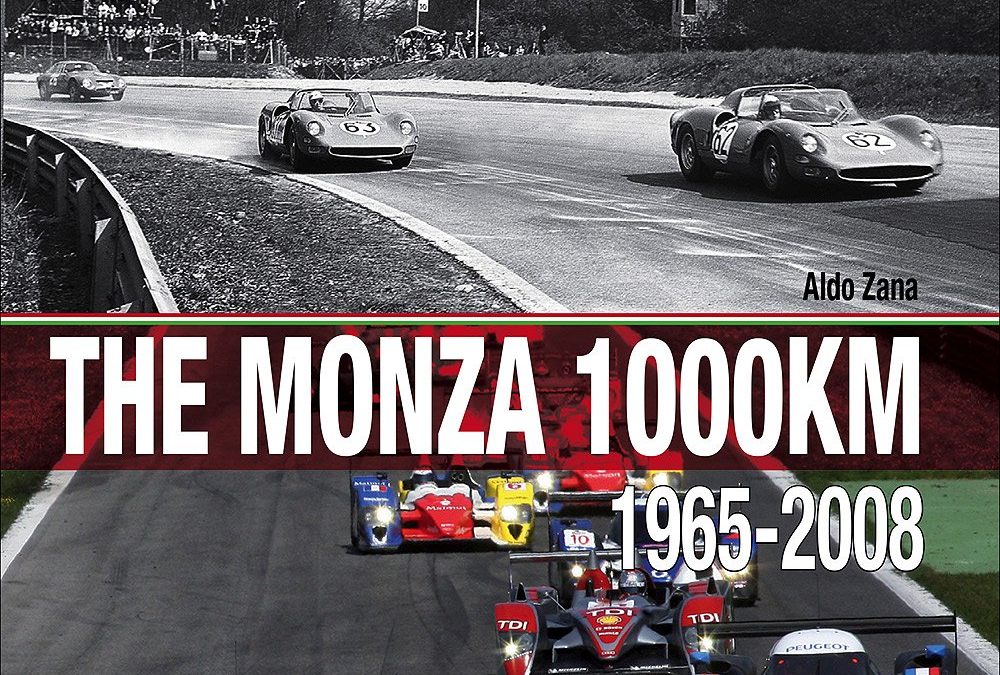
Between 1965 and the Nineties, the 1000 Km of Monza-Filippo Caracciolo Trophy, was one of the most classical endurance races – a sort of 24 hours of Le Mans – and for many seasons was, rightfully, a round in the world championships for sports cars and prototypes. Top drivers and cars challenged each other on that historic Italian track and banking, the car makers including Porsche, Ferrari and Ford, bringing to life many unforgettable pages in the history of motor sport. Aldo Zana, prominent motor racing historian, tells this fabulous story, year after year, included the competitions held between 1995 and 2008. Every edition is enriched with starting grids and final placings. A huge work, never attempted since now, illustrated with outstanding pictures, many of them never before published.
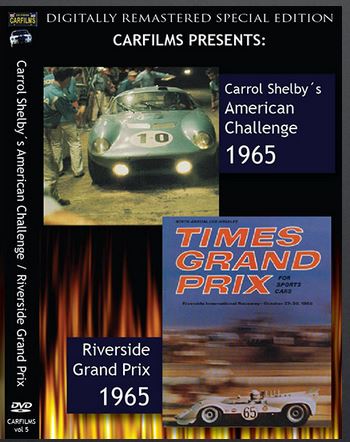
Carrol Shelby´s American Challenge 1965
Carroll Shelby starts the American steamroller that will be Ford in 1965! Finally winning the world manufacturers title. Carroll is commissioned by Ford to win in Europe at any cost. This film shows the early part of the year as Shelby brings the Daytona Coupes to Sebring, and also the first outing of the Ford GT’s under the management of Shelby American you see the first modifications to the Ford GT40, also how the Daytona Coupes are a force to contend with. Jim Hall brings out his Chaparral to a fantastic showing Until it starts to rain! And the coupes don’t flood-out like the Chaparrals.
Riverside Grand Prix 1965
Very rare coverage of Riverside Raceway in 1965. This film shows the race from start to finish with Criss Economakie and Phil Hill calling all the shots.The only footage known of Ford’s first attempt at the Can Am circuit showing the Ford X-1 GT is a GT40 Extended from clip, with the top cut off. Footage of racing Cheetahs also Chaparral with Hap Sharp driving, drivers Bob Bondurant, Parnelli Jones, and many others names you will recognize from the era!

The first entirely new Porsche in 16 years. The body of the 911 was completely new yet unmistakably Porsche. It came with disc brakes all round and a 5-speed manual gearbox, the engine being an air-cooled flat 6. As a result of racing development the 911S was introduced in 1966 with a net power of 160bhp, Weber carburetors and a top speed of 137mph. American emission laws drove Porsche to develop a mechanical fuel injection system which also gave more power, they called the model 911E. This is a book of contemporary road tests, new model introductions, development history, technical & specification data, long-term tests, driver’s impressions. Models covered include:- 911, 911S, 911L, 911E, Sportomatic, Targa.

“Ferrari would never discuss the competitors’ cars. He felt he gave to his drivers the car to win, and he was not concerned about the competition.” — Jean Guichet
“When I left the pits, the Cobra right away felt big and clumsy. As it accelerated through the gears it felt very fast, but it also felt like a piece of junk, a scary kind of combination.” — John Morton
“We were running neck and neck with the Daytona Cobra — around 180 mph.” — Bob Grossman
“So every time I would see a red car coming up, I’d think, ‘Oh shit. Now they are going to go by us.’ ” — Bob Bondurant
“He (Ken Miles) was the best racing driver I ever worked for. We used to go to races with the man and I knew we were going to win. Have you ever had the feeling? I’ve never had that feeling since.” — Charlie Agapiou
“The GTO was the most beautiful-handling car I’ve ever been privileged to drive. The GTO had perfect balance, absolutely perfect — the ballet dancer of motor cars. There was never an other car like the GTO. Never.” — Mike Salmon
“But the people who said that the 289 (Cobra) wasn’t a good handling car didn’t know what they were talking about. Compared to what?. That FIA Cobra handled like a dream — and was fast too.” — Dan Gurney
“We knew, plus or minus, what capabilites of the Ferrari were, and we knew we would beat it. I knew that, if I could get the Daytona coupe Ferrari wouldn’t be in business.” — Carroll Shelby
